How to properly cut fuchsia growing in a flower bed and in an apartment for the winter?
In the fall, the owners have a lot of work both in the flower garden and with houseplants. If you do not prune fuchsia in time for the winter, the flower will not rest in the cold season and in the summer will not be able to fully please you with huge caps of inflorescences. A tropical shrub needs warmth (but too high temperatures are contraindicated for it), high air humidity, and shading. Help him survive the unusual cold winter - and in the spring the whole crown will be covered with large multi-colored inflorescences.
What are fuchsias?
The owners love fuchsia for a huge variety of species, lush flowering and unpretentious care. Breeders have bred a variety of varieties for outdoor flower beds, and for growing on a windowsill, and for hanging pots.
Depending on the purpose of the plant, you can choose one of three forms of the bush:
- erect, with upward shoots;
- ampelous, the branches of which fall down in a cascade;
- semi-ampel, in which the shoots stretch upward, and when flowering, under the weight of the lush caps, they bow and hang below the bottom of the vessel.
Fuchsia bloom lasts from spring to autumn and is striking in its variety. The plant begins to release buds at a tender age, they can be seen even on small cuttings. Some varieties form inflorescences, collected in clusters, with different colors, from white to purple. The flower calyx can reach a length of 10 cm, there are terry varieties with a large number of petals, there are more modest, but no less charming inflorescences.
When growing ampelous forms, a tall flowerpot covered with decorative lashes looks very beautiful. But if the vessel is low, the middle appears to be empty. Do not forget that breeders have bred different types of fuchsias, this will help you create a complete composition. Plant a stalk of an erect variety in the center of the flowerpot; it will grow into a lush bush that adorns the top of the flower garden.
Preparing an indoor flower for winter
The plant also needs rest. If you leave fuchsia in a hotly heated room, continue top dressing and watering according to the summer regime, it will not gain strength and will not be able to bloom abundantly next year. When growing in an apartment, consider the area that the overgrown crown will take. If you leave too long shoots, in summer they will begin to grow intensively and the bush will take up half the room.
Fuchsia pruning can be done in spring and autumn. If you were doing this work in the spring, before wintering, be sure to check how much the shoots have grown. In the first year, the bush should not enter dormancy with long stems - cut them shortly, leaving about 15 cm each. When the crown is formed, remove all weak and diseased branches. The bush should not be too thick - leave only strong shoots, cut off the rest. Shorten all remaining processes by 1/3 of the length. Now the flower is ready to go into hibernation.
Advice
When pruning, pay particular attention to semi-ample shapes. Weak shoots can break under the weight of the lush inflorescences. Leave only strong branches, and remove all thin ones.
In living quarters, it is undesirable to leave fuchsias for the winter. Plants need a temperature no higher than + 10⁰ C, and people in such conditions will feel very uncomfortable. The best place for flowers would be a cellar, basement or glazed loggia. If the temperature does not drop below zero, the plants will winter well. Not all owners have suitable buildings, sometimes you have to keep bushes in the apartment all year round.Choose the coldest corner for them, but even there fuchsia will not be able to fall into a state of dormancy and will begin to release thin, weak shoots. Do not let new branches grow, be sure to cut or pinch them at the very beginning of development.
In the spring, cut off diseased fragments and shorten branches that have grown over the winter. When young shoots begin to develop, pinch the tops from time to time to make the crown more lush. With this procedure, keep in mind that it will take about 2 months from the last operation to flowering. So that in the summer the bush is already covered with lush inflorescences, finish the pinching no later than April.
Winter fuchsia in the open field
Fuchsias are not adapted to wintering in harsh conditions. In rare cases, it is possible to grow them outdoors all year round. Only the most frost-resistant species in regions with a mild climate and under good shelter can withstand such a life. To equip a flower garden in the garden or decorate a heavy flowerpot, grow flowers in containers that can be buried in the ground in summer and stored in a cellar in winter.
If you decide to leave the plants in the flowerbed for the winter, cut them as short as possible, leaving only the strongest shoots. Do not leave all the specimens in the ground, take a few plants or cuttings of each variety to the basement.
About a month before the onset of cold weather, begin to prepare plants for changing conditions. When feeding, exclude nitrogen, leave only phosphorus and potassium. Gradually reduce the amount of water and lengthen the time between waterings. Keep the fuchsias outdoors until the coldest months so that they gradually enter a dormant state.
Treat the plants with preparations for fungal infections before pruning in the fall. When the drug is dry, you can start the main procedure. When pruning, leave only shoots covered with real bark (green twigs will not survive the tough period).
Procedure for pruning before wintering:
- tear off all the leaves;
- examine the bush and remove all unripe, diseased, weak and damaged fragments;
- remove branches that break the shape of the crown, curves and ugly branches;
- shorten the remaining shoots by 1/3;
- Before harvesting to the basement, keep the plants in a warm, dry place until the slices are dry.
After pruning in the fall, the bush should consist of a stem and a few skeletal branches. Don't worry about flowering, this plant will bud on new growth as well. Once again, make sure that there are no clutches of pests left on the shoots, otherwise in the spring the insects will begin to eat the flower weakened during the winter. If the fuchsias were not grown in containers, dig them up, shake off the roots and place in a box, wrapping the underground part with damp moss.
Most often, fuchsias die in winter, this happens both with plants in the open field and during home wintering. If you do not want to be completely without flowers by next summer, prepare cuttings for autumn pruning. When removing strong stems that thicken the crown too much, cut them into slices 5 to 8 cm long. Stick them into the ground, keep them warm for a while, and when the sprouts take root, transfer them to a cool room until spring.
Wintering fuchsias
The bush needs humid air in any season; in the summer it loves spraying from a spray bottle. But in cold weather, splashes on the leaves will have a bad effect on the condition of the flower - it is better to put a tray filled with wet pebbles next to the pot. If the plant overwinters in a conspicuous place, you can place a decorative composition of stones and moss nearby and keep it constantly moist. Monitor the condition of the soil: abundant watering is not needed now, but the earth should not dry out.
The most comfortable temperature for wintering fuchsias is about + 10⁰ C. No additional fertilizing is needed in the cold season. The flower is asleep, and the reserves accumulated over the summer are enough for it to feed. In complete darkness, plants will survive if the air temperature does not exceed + 8⁰ C.In warmer rooms during the daytime, the bushes need light; you can turn on fluorescent lamps near them.
Fuchsias are very hardy, they rarely get sick, but if they winter incorrectly, they can die. If at the end of winter you notice that the leaves have fallen off and the stems are grayish, try pulling off a small piece of the bark. If a green layer is visible under it, the plant is alive. Dry gray fabrics indicate that the bush is dead. Do not discard the plant if it has live parts. Perform sanitary pruning in the spring. Remove all dried fragments, shorten the remaining shoots by 2/3. Soon, new processes will go from the surviving tissues, and the flower will again become lush.
Various crown shapes
By pruning, you can give fuchsia a shape that fits well into the design of a room or flower garden. If you need a shrub, cut off the top of the young cutting, leaving 2 pairs of lower buds. New shoots will soon appear from the sinuses, which will also begin to bud. The tops of young shoots should be pinched. At the same time, look at the varietal characteristics of the plant. If internodes are located far from each other, leave 2 pairs of buds on the shoots, if close, then 3-4. Perform this procedure on all new shoots until you decide that the crown density is sufficient.
If desired, decorative trees can be grown from upright varieties. To do this, pinch all the buds that appear below the intended crown. When the plant reaches the desired height, pinch the top, and cut off the rest of the shoots in the same way as for the semi-shrub form. When growing a standard form, you need to remember that the trunks may not withstand a heavy load with abundant flowering and break. If you want a dense crown to develop on a tree, tie it to a support.
The trunk can be given a sinuous or curved shape, such plants look spectacular and original. If you plant several fuchsias in one pot, you can intertwine or intertwine their trunks in various ways. It is necessary to carry out this procedure while the shoots are young and bend well. At first, the position of the trunk should be fixed with strong threads, and when the wood becomes solid, the ropes can be removed. An interesting composition will turn out if several varieties with inflorescences of different shapes and colors are grown in this way.
Advice
If you want plants of different heights to grow nearby, pinch their tops at the right level.
Correct pruning in autumn will help your fuchsia not lose strength over the winter, and in the spring it will release strong shoots that will give many flowers. You can limit yourself only to thinning and shortening the branches: this plant is beautiful in its natural form. If you want to give the flower an original shape, a haircut and pinching will give you a lot of room for imagination. The combination of ampelous, semi-ampelous and upright species will make it possible to compose a decorative composition that adorns both the flower garden and the interior of the apartment.
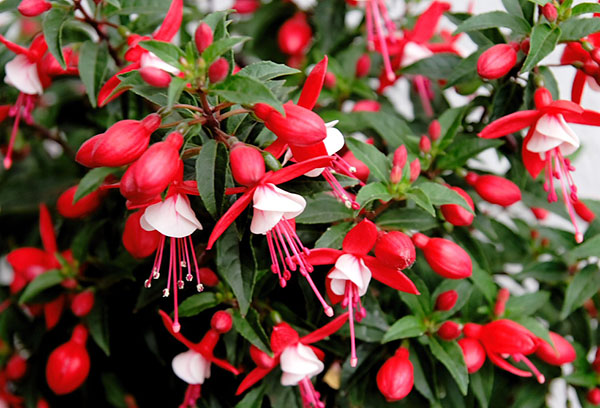
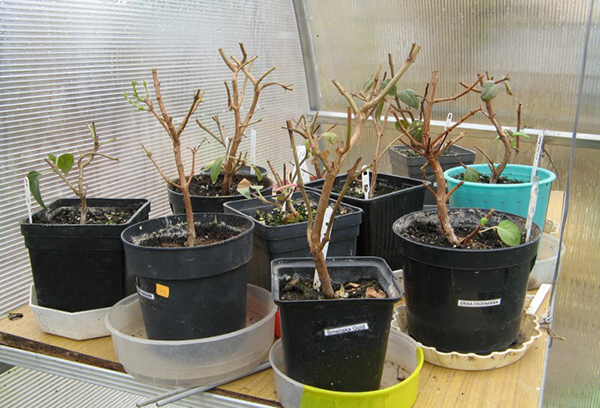
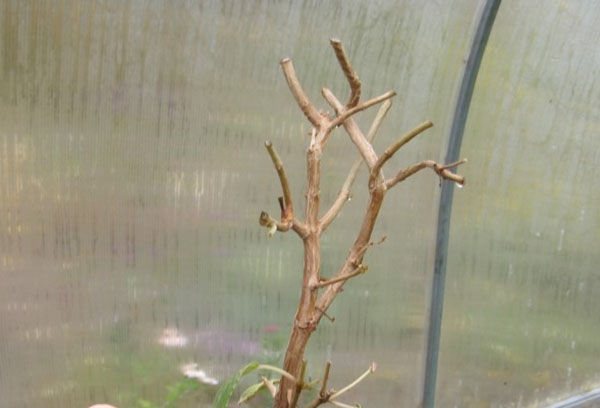
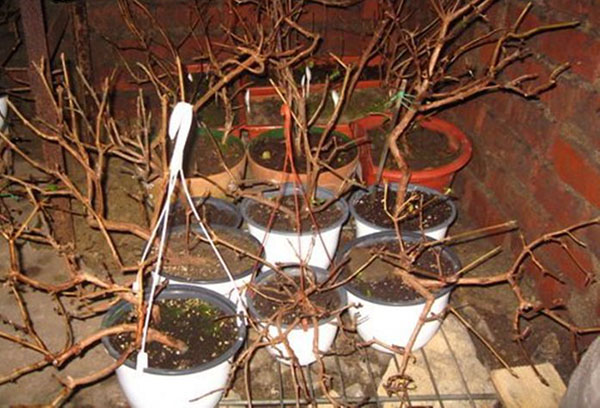
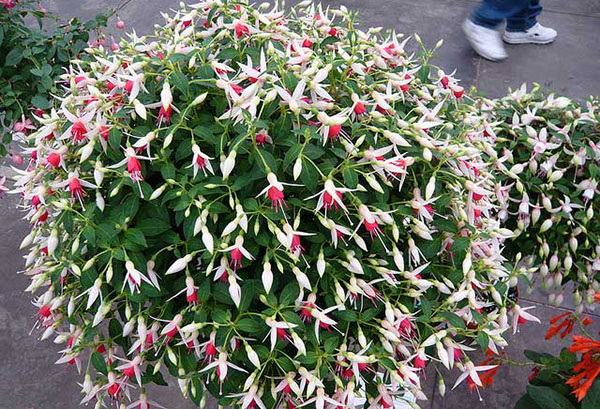
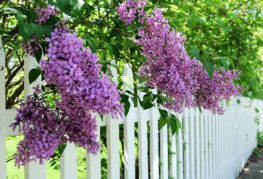

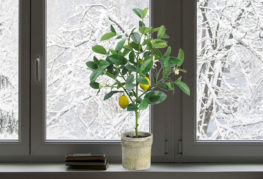
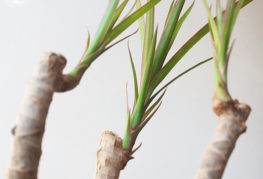
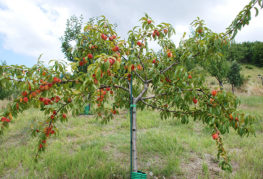
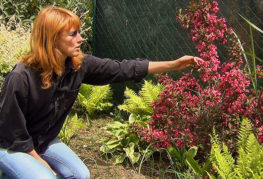
and will be published shortly.